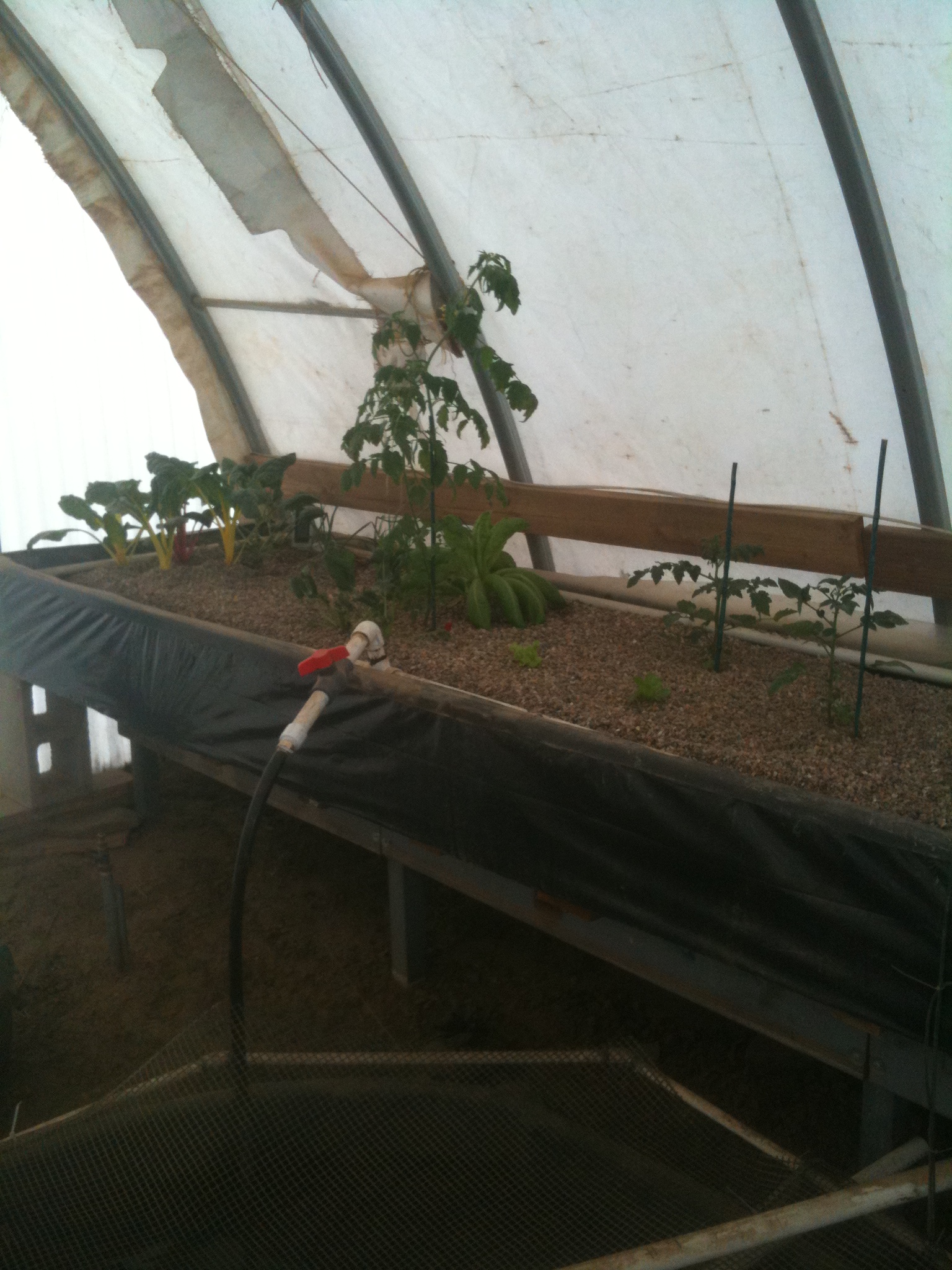Science Isn't Always Fun
Have you ever had one of those days where everything just seems to go bad? Well, that is what the last 24 hours has seemed like to me. I left Colorado yesterday evening for a long driving road trip to Alberta, Canada. First, the rental car company gave me a very hard time about my rental situation. I used my GPS to pick my driving route – shortest time – and I must have found every construction project in Montana that slowed my progress by hours. There was no cell coverage right when I was supposed to be making an important conference call. Oh, and then there was the email this morning from one of our scientists in Colorado saying that he was sad to tell me that a tragedy had happened with the rainbow trout in one of our aquaponic systems!
I guess our Facility Manager, Dave, had found a large number of fish floating on this particular system when he got to our reseach building at our Meadow Hollow campus this morning. He observed that the water pump on the system was not working, and when he checked the power plug he found it was not firmly plugged into the power outlet. When he pushed it into the outlet the pump immediately started working. After further review the guys determined that all but one trout in the system had died. So they measured and examined all the dead fish for any obvious issues and did not find any. The apparent cause of death was oxygen deprivation.

Meadow Hollow System 4 on June 15, 2010. Fish kill due to pump issue duing the night of June 17.
Now, the rest of the story as Paul Harvey would say. We had a very severe wind storm yesterday. The power outlet in this greenhouse-like, fabric covered building is on the exterior wall that had been rattled and rolled all day yesterday in the wind storm. Even though this system was working properly when it was last observed yesterday about 14 hours before the observation of the fish kill today, it is very likely that the pup plug had been jostled loose from the outlet during the storm, after the crew had left the site.
So, obiously, we have learned a lesson from this circumstance. We should put on our checklist to check all plugs of our systems at the end of every day. What else could we have done differently? This system has two airstones, and in almost three years of operation, there have never been critically low oxygen levels before (no pump failures prior to this). Should the system have more airstones? Should the stocking density have been less? Maybe yes to both of those questions. Lets examine this further.
So as scientists, what can we learn from this unfortunate situation. Well fortunately, our scientists do a very good job of collecting daily data on this system and all of our systems. We know that oxygen levels were adequate for the system prior to the pump failure. We have an underwater camera in this system, and observations yesterday revealed healthy fish and no unusual water quality situations (excess suspended solids). These fish were aggressively feeding, and the water temperatures had been consistently been close to optimal for the last several weeks (15 – 17 degrees C). Fish growth had been exceptional since these fish were stocked into this system.
Lets examine the economics of this loss. These fish cost us $50.00 to purchase as fingerlings (80 fish initially). They had consumed about $7.00 of food since they were stocked, and used about $8.00 of electrical costs for the pump and air stones. Labor costs for their management to this point were probably about $10.00. With the anticipated upcoming environmental conditions anticipated for the system these fish would have been harvestable with an additional investment of about $15.00 in food, labor and electricity. Therefore the total costs from stocking to harvest would have been ~$90.00. We would value these fish at harvest at about $175.00 ($5.00/lb. for 70 fish at 1/2 lb. each average). Therefore our net profit would have been $85.00. If our stocking density would have been 50% of what we used we would have made net profits of about $30.00 (remember labor and power costs are really no different for the lower stocking density). Now if we restock at the same stocking density we originally used and we expend the same costs to harvest, we would basically break even for the fish over the course of the two fish production periods. If we completed a second production period with the 50% density we would cumulatively make $60.00 compared to the breakeven for the failure and success combo. This would seem to be a no-brainer, right? We should have reduced the stocking density!!
But wait. Do we know that the fish with lower stocking density would have survived the short term pump failure/ I do not think that we do. Also, aren’t we forgetting something? What would 50% fish stocking density do to our plant production? Again, we do not know, but I suspect it would greatly reduce our plant production. Where are the profits from our plants under the two scenarios?
Well, we will be restocking this system next week with a density similar to what we previously used. We will be quantifying our plant production at the end of our fish production period, so we will have those economics. Then we will be able to run another experiment with the 50% stocking density and we can then quantify the plant production under those conditions.
So wow, this current tragedy will actually give us the chance to learn more in the long run. Our bad day today will become a contributor to great days to come as we use science to learn more about this exciting aquaponics technology!!
